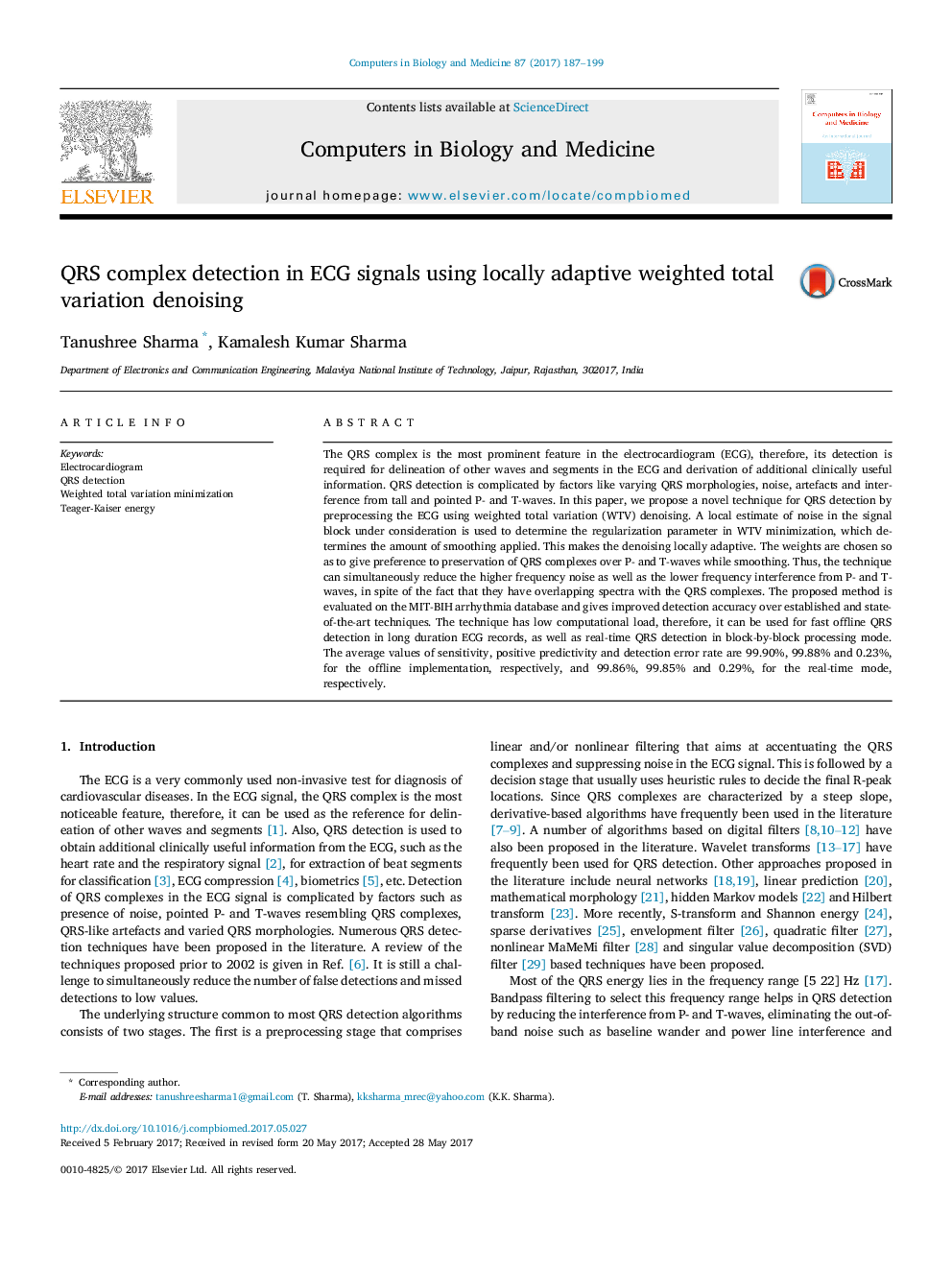| Article ID | Journal | Published Year | Pages | File Type |
|---|---|---|---|---|
| 4964811 | Computers in Biology and Medicine | 2017 | 13 Pages |
Abstract
The QRS complex is the most prominent feature in the electrocardiogram (ECG), therefore, its detection is required for delineation of other waves and segments in the ECG and derivation of additional clinically useful information. QRS detection is complicated by factors like varying QRS morphologies, noise, artefacts and interference from tall and pointed P- and T-waves. In this paper, we propose a novel technique for QRS detection by preprocessing the ECG using weighted total variation (WTV) denoising. A local estimate of noise in the signal block under consideration is used to determine the regularization parameter in WTV minimization, which determines the amount of smoothing applied. This makes the denoising locally adaptive. The weights are chosen so as to give preference to preservation of QRS complexes over P- and T-waves while smoothing. Thus, the technique can simultaneously reduce the higher frequency noise as well as the lower frequency interference from P- and T-waves, in spite of the fact that they have overlapping spectra with the QRS complexes. The proposed method is evaluated on the MIT-BIH arrhythmia database and gives improved detection accuracy over established and state-of-the-art techniques. The technique has low computational load, therefore, it can be used for fast offline QRS detection in long duration ECG records, as well as real-time QRS detection in block-by-block processing mode. The average values of sensitivity, positive predictivity and detection error rate are 99.90%, 99.88% and 0.23%, for the offline implementation, respectively, and 99.86%, 99.85% and 0.29%, for the real-time mode, respectively.
Keywords
Related Topics
Physical Sciences and Engineering
Computer Science
Computer Science Applications
Authors
Tanushree Sharma, Kamalesh Kumar Sharma,
